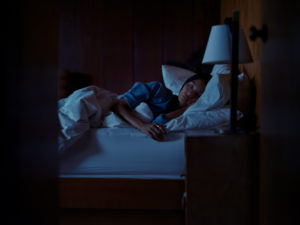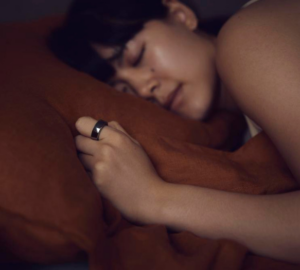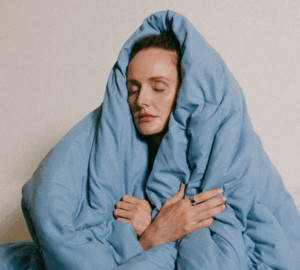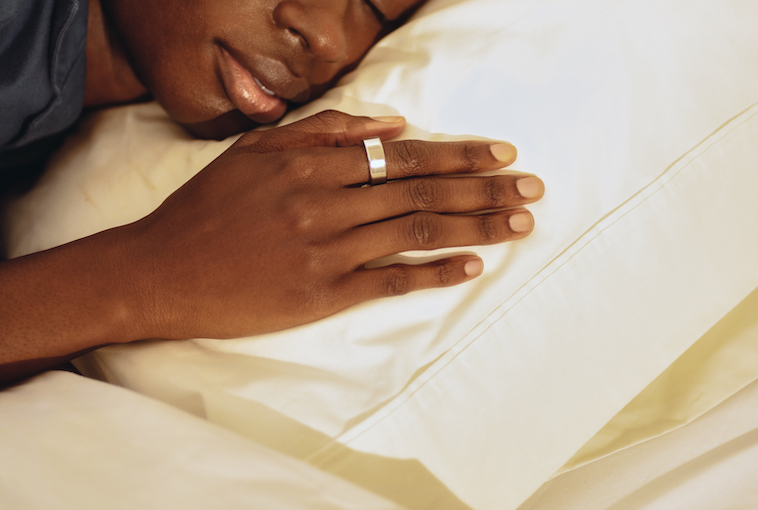Chances are, you wouldn’t throw on flip flops and jean cutoffs to go for a run, right? Just as what you wear influences your athletic performance, what you sleep on influences about 20 to 25% of your sleep quality, says Michael Breus, Ph.D., clinical psychologist and sleep expert.
“I believe sleep is a performance activity — and equipment matters just as much as for something like exercise,” he says. And since, as you hopefully know by now, your sleep quality affects almost every aspect of your life, from your focus at work to your immune system to your hormonal health, choosing the right bedding — including mattress, pillow, and sheets — can improve many aspects of your life. Here, expert tips on how to choose the best bedding for your sleep style.
How Bedding Impacts Your Sleep Quality
When you choose the best type of mattress and pillow for your body and sleep style, you can expect deeper relaxation and better sleep, says certified sleep science coach Alex Savy, who tests hundreds of sleep-related products. What’s more: Your body’s tension will be properly distributed, which means less pressure, and often, pain relief.
There are two factors at play when it comes to getting a comfortable night’s sleep: body alignment and thermoregulation.
Body Alignment
“When the body and the neck are supported properly by a pillow and mattress, the spine remains neutral,” Savy explains. “This means in a healthy sleeping posture, less pressure builds up in the spine and you have fewer chances of experiencing back pain.”
Breus adds that when your spine is out of alignment, your surrounding musculature is constantly having to work overtime. When you’re in alignment and it’s able to relax, your spinal muscles can be repaired and receive nutrients.
The right mattress and pillow for proper body alignment depends on your height, weight, injuries and pain points, and your sleep position. (More on that below.)
Thermoregulation
The other half of the equation: which bedding enhances your body’s ability to thermoregulate, or its ability to control its temperature, naturally in your sleep environment. “Every aspect of sleep is controlled by heat and temperature,” as Breus, known as the Sleep Doctor, reminds us.
Throughout the day, your core body temperature slowly rises, and then it begins to drop in the evening. That drop signals your brain to release the hormone melatonin, which tells your body it’s time to start getting sleepy. Your body then needs to remain cool to know to fall asleep, and as it starts to heat back up in the wee hours of the morning, which prompts your systems to wake you up for the day.
This means that the temperature of your sleep environment affects your ability to stay asleep and enter restorative deep sleep — and this depends not just on the air in the room, but how much heat your mattress and sheets retain.
How To Pick The Best Mattress for Your Sleep Style
The mattress you sleep on is likely going to be the most expensive, and perhaps the most difficult, part of the sleep environment equation. Before you start shopping, here are some pointers from our experts to keep in mind.
Size
Who typically sleeps in your bed? A Twin is best suited for one person. While two people could fit in a Twin, consider a Queen if you sleep with a partner. If you have kids or pets who often get in bed with you (or you just like more room!), consider upgrading to a King. If you and/or your partner are over 6 feet tall, opt for a California King, which is four inches longer than the regular King.
Support
Mattress firmness should be more about body size, pain points, and sleep position — in that order — than about your perceived comfort while awake in bed.
“Choosing the right support level can help with tension redistribution, which is always beneficial for pain alleviation,” says Savy. He adds that dealing with pain or discomfort usually causes you to wake up often throughout the night, which disrupts your sleep cycle and harms overall sleep quality.
In general:
- Softer mattresses are best for people who weigh less than under 130 pounds and side sleepers, as they cradle the hips, Savy points out.
- Medium to medium-firm mattresses are going to be best for the majority of people. Specifically, they’re ideal for folks who weigh 130 to 230 pounds; back sleepers; combination sleepers (meaning you sleep in different positions throughout the night); and people with hip, shoulder, or back pain.
- Firm or extra firm are best for folks who weigh more than 230 pounds, as their musculature needs more support at night. It’s also often more comfortable for stomach sleepers as it prevents their back (and therefore spine) from sinking in.
- Adjustable firmness allows you to select a different firmness for the right and left half of the bed, are ideal if you and your partner want or need different levels of support.
Material
What a mattress is made from determines how that bed will hold or disperse your body heat, how it will support your musculature, and how much you can feel movement from your partner rolling over or dog jumping on and off.
In general:
- Memory foam retains heat, so stay away if you run hot or sleep in an already-hot environment. However, because it pulls away from your body, it’s great at isolating motion transfer, so it’s a good choice if you run cold and like to stay in the same position all night, or if you sleep with a partner or pets. Memory foam can also be good for people with hip pain or other pressure points, Savy adds, but so are latex and hybrids, so go off thermoregulation first and foremost.
- Latex is ideal if you like the memory foam feel, but want to stay cooler. It has the same perk of isolating motion transfer but it forms to your body instead of pulling away, so it’s great for people with pain points. In general, Breus says he feels latex is “the perfect material to sleep on.” Keep in mind: Firm latex models are usually bouncier than softer ones, so if you run hot, need firm support, but you sleep with a partner, kids, or pets, consider a hybrid, Savy advises.
- Coils are great for keeping you cool at night as they promote airflow, but they can creak when people get on and off the bed and they don’t provide much pressure relief. If you do want to go coil, Breus says the number of coils doesn’t much matter; what does matter is that they’re individually-wrapped and not full-extension.
- Hybrids are a sandwich of coils and either memory foam or latex, so they offer the best of coil’s cooling airflow and foam/latex’s comfort and motion isolation. This is where most people will fall, Breus notes. They’re also great for folks with back pain: One study found when folks with back pain and stiffness switched from a spring mattress to a medium-firm, spring-foam hybrid, their back pain decreased by nearly half and sleep quality improved by 55% after just 28 days.
How To Pick The Best Pillow For Your Sleep Style

Choosing a good pillow for your body and sleep style is just as important as picking the right mattress. “The right pillow will keep one’s neck and head aligned with the rest of the spine,” Savy explains. The wrong pillow will cause your head to tilt, which creates an unhealthy neck curve and throws the spine out of alignment, which in turn can cause discomfort, pain, and headaches, he adds. Consider:
Firmness
Some people love to knead squishy pillows while others want a formed, memory foam block under their head. This is mostly a matter of personal preference considering you can always stack pillows to put you at the right height, but there are a few outlying considerations (below, in “Other Considerations”).
Loft
The thickness of your pillow — called the “loft” — should be determined by your sleep position.
- If you’re a side sleeper, you want a thicker, higher-loft pillow to keep your nose directly in line with your sternum.
- If you’re a back or stomach sleeper, you want a thin pillow so your neck isn’t being pushed too far forward or backward, which makes it harder to breathe and can create neck pain.
Number
Based on the above, determine how many pillows you need to keep your spine in alignment. Consider things like:
- If you love a squishy pillow as a side sleeper, you might need to stack two to keep your nose in line with your sternum.
- If you have hip pain, you may be more comfortable with an additional pillow between your legs.
- If you snore and therefore want to sleep on your side to minimize that, you might fare well with a body pillow along your back to keep you from rolling over.
Other Considerations
If you have neck or shoulder pain, you should talk to your doctor about if there’s an orthopedic pillow that’s ideal for you, or if you’d benefit from changing your sleep position.
Also, many back sleepers may prefer a cervical pillow, which is made from memory foam and has an indent for your head and neck. “Such models have a slightly elevated edge to fill in and support the natural curve of the neck,” Savy points out.
If you’re allergic or irritated by down feathers, opt for some kind of hypoallergenic materials (usually foam, latex, or bamboo).
How To Choose The Best Bedding For Your Sleep Style
Sheets and blankets are the key to proper thermoregulation, both experts agree. There are three things to consider when it comes to buying sheets: material, durability, and seasonality. “There’s a comfort factor, but if you wash your sheets enough, the material will soften over time,” Breus adds.
Material
“Using materials and fabrics that aren’t very breathable can cause a person to overheat during the night, which may negatively affect their sleep quality — and, consequently, health,” Savy says.
He advises opting for any kind of natural fabric (cotton, bamboo, viscose, linen, Tencel, natural silk, etc.) which will allow for unobstructed air circulation and wick excess moisture away, keeping heat from building up. Finally, Breus warns, “Avoid polyester at all costs.”
Durability
How long sheets will last is dependent on its thread count. The higher the thread count, the longer they’ll last, wash after wash — but they may not be as soft. “So pick your poison,” Dr. Breus frames. He adds: “Personally, I’d prefer to overhaul my sheets sooner since you can only wash out so much body oils, sweat, and dirt over time.” If you’re going to opt for a lower thread count, Dr. Breus recommends sticking between 350 and 500 thread counts for optimal comfort.
Seasonality
“The breathability of your sheets and blankets is what creates or prevents a microclimate under the covers with your body heat,” Breus explains. While it’s nice to be toasty in the winter, warmer weather means you don’t need a down-fill comforter to create more heat in the summer.
Use a heavier blanket or comforter in the winter and swap it out for a lighter one in the summer, Breus suggests. You can also just take your winter comforter out and use the duvet cover for the summer, particularly if it’s a lush fabric like linen.











